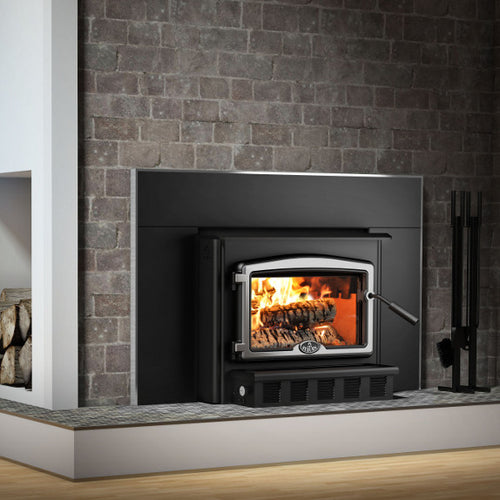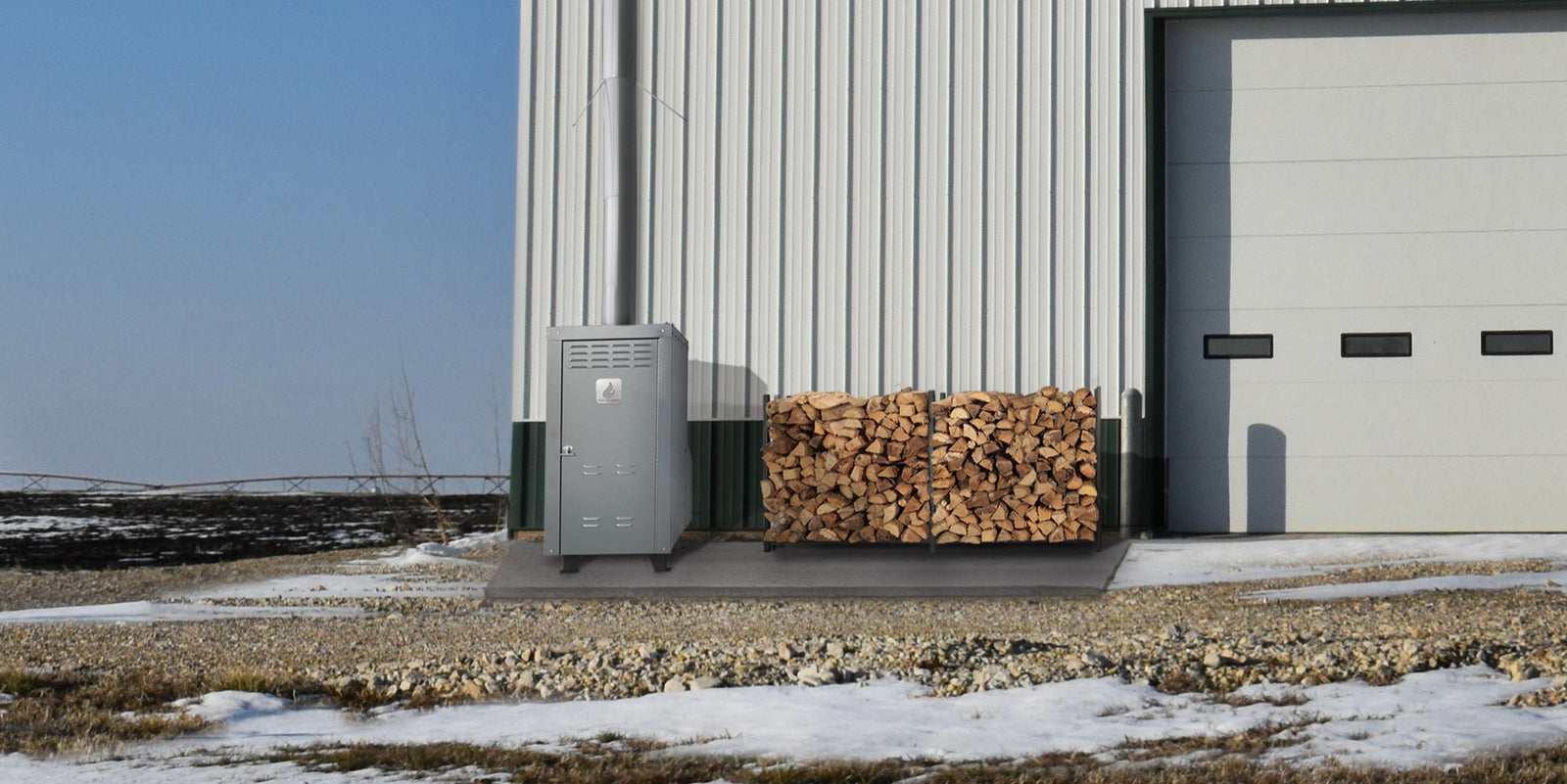What will make your fireplace energy efficient?
July 19, 2023

The Best Option: Fireplace Insert
If you are looking to use your fireplace to supplement some of your heating bills, it is best to look into installing a fireplace insert. A fireplace insert is essentially a wood or gas stove that is inserted into the fireplace. Wood and gas stoves burn fuel more efficiently and provide more heat than an older traditional fireplace. A fireplace insert is easy to install and only requires a chimney liner to connect directly to the top of the stove to run up to the top of the chimney. The chimney liner kit along with the face trim plate will seal off the old fireplace and prevent any downdrafts that are commonly associated with open fireplaces.
Modern wood burning inserts can have up to an 8 hour burn time with one single load of wood and can provide on average about 75,000 BTUs. A traditional fireplace will only burn for about two hours with one load of wood and only provide around 20,000 BTU's. Wood stove fireplaces inserts are available in a variety of styles to accent any style of room. The Osburn Inspire 2000 Insert is a very modern insert that fits nicely in a contemporary room. While the Osburn Matrix 2700 Insert is more of a traditional look and would fit nicely in a more classic older home. The wood burning fireplace inserts are also sold in a variety of sizes to accommodate many fireplaces. It is important to choose the proper size insert based on the size of the fireplace and the room it is heating. If the insert is too large you could end up heating yourself out of the room. A wood burning fireplace insert is easy to clean and is far less dirty than an open fireplace. Just keep the door shut while you are running a chimney cleaning brush down the stainless steel liner and the soot will fall down into the stove. Once the soot has settled in the stove, simply vacuum it out with no mess.
If you have a gas line near your fireplace a gas fireplace insert is a good option. Gas fireplace inserts burn at around 40,000 BTUs. A gas fireplace insert is similar to a gas stove and is built to fit inside a fireplace. It will be smaller than the wood stove inserts and will be able to fit in smaller fireplaces that won’t accommodate a wood stove insert. Installation of a gas insert is very simple. Once the gas line is in place, you simply connect the gas liner to the stove and install your chimney liners. Gas inserts typically require Co-Linear chimney venting which requires two chimney liners. One chimney liner is for the exhaust of the insert and the other is for the fresh air intake. Gas inserts are nearly maintenance free and require little servicing. Like wood stove inserts, there are endless options to customize the insert to match your decor. The Napoleon Ascent 42 Direct Vent Gas Fireplace Insert has a variety of options to choose from to customize the appearance. Most gas inserts offer a thermostat which makes heating the room easy and convenient. If you are not looking to bring wood in your home but still want to enjoy a fire in a much more efficient manner than installing a gas log set, installing a gas fireplace insert is a great option.
The Good Option: Damper
A good fireplace damper is key to prevent cold downdrafts in the winter months when the fireplace is not in use. It will also ensure that cool air from the air conditioner does not draft up the chimney. When older fireplaces were originally constructed, they were fitted with a throat damper directly above the firebox. Throat dampers are not able to have a gasket seal since they are so close to the fire that over time the throat dampers warp a little and are not as effective at preventing heat loss.

A good solution to prevent energy loss through the fireplace is to install a top sealing damper. The top sealing damper mounts to the top of the flue and acts as a chimney cap. A cable is lowered down the chimney and a bracket is mounted to the inside wall of the fireplace. The cable is adjusted to be fixed in the bracket when the damper is closed and you simply pull the cable from the bracket to open the damper. Since the damper is at the top of the chimney where the flue temperatures are much lower, it is able to have a silicone gasket seal ensuring the damper is fully closed. The dampers are sold in a variety of sizes and styles ranging from dampers that pop upward like the Lock Top Top Sealing Dampers to the dampers that flip in the flue such as the Lyemance Top Sealing Dampers.
The Easy Options
Burn Hardwood
Softwood is perfectly fine to burn in a fireplace as long as the moisture content is around 15 to 20 percent. Softwoods burn very quickly whereas hardwoods such as oak, walnut, maple and cherry burn much longer. If you are looking to get a longer burn, it is best to use hardwood. Make sure the moisture content of the hardwood is between 15 and 20 percent. If the wood is too dry it will burn very quickly.
Adding More Air To The Fire
Fresh air (oxygen) is a necessity for a good fire and the primary fuel. If the home is closed tightly with quality windows, doors and insulation, it can lack the fresh oxygen needed to feed the fire. This will cause a lazy, smoky fire that will put itself out. You can open a door or a window periodically to bring in fresh air but that can be inconvenient in the dead of winter. The best solution would be to install a fresh air intake near the fireplace. A fresh air intake is a small pipe that runs through the wall with a vent hood that you can open and close when you want to add more air to the room.
Circulate Air with Fan
Another way to make your fireplace more efficient and provide more heat is to have room to room fans that can push the heat around the house. This would be similar to a blower on a wood stove. You can also use box fans to push the heat through the house. Another option is a fan built to be installed in a wall that will push the heat from the fireplace to other rooms.
DIY Center
(AKA ‘The Rockford Files’)
From video tutorials to product walkthroughs, we have a variety of DIY resources just for you! Click the button below to view our entire library.








